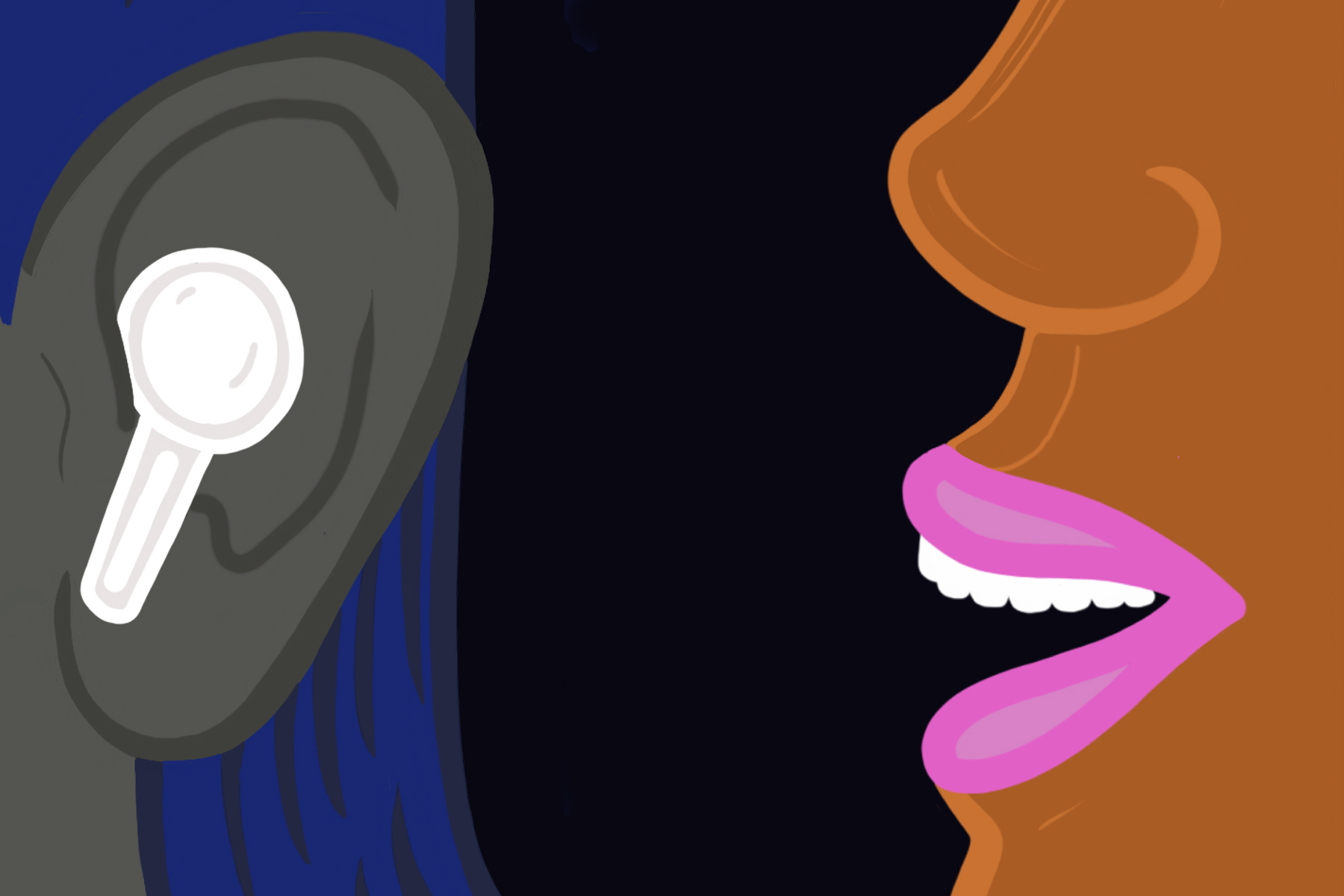“You can go pick up your paper from the front desk if you haven’t already,” the professor kindly told the student. Visibly annoyed, the student made a show of taking out the AirPods that hid beneath layers of hair.
“What did you say?”
“Oh sorry. I said that you can go pick up your paper —”
This kind of interaction has happened countless times since the release of Apple’s wireless earbuds last year, and the cycle doesn’t seem to be slowing down any time soon. While AirPods are only the most recent contender in a very long line of distractions vying for our attention, these sleek white earbuds introduced us to new dilemmas, including claims of health concerns, new symbols of status and awkward social situations.
Before wireless earbuds, there were, of course, earbuds with wires, and before those, there were headphones, where we listened to a wide spectrum of music genres, as well as podcasts, meditation and mindfulness apps, audiobooks, Duolingo lessons and more.
Before those, we had stereos and boomboxes and radios of all kinds. Newspapers, books, magazines, comic strips and hordes of print and images grabbed our attention; we read on the subway to work, on the plane to visit our grandparents, in between classes, before going to bed at night, while eating lunch and so on. Before that — well, you get the idea.
It’s not a new concept; these days, distractions (in whatever form they take) are so ingrained in our society and way of life that they’re basically essential to being human. They tell the world for us, “Hey, I’m in my own little bubble for the moment, and I’m content this way for now!”
But with AirPods, this gets a little more complicated.
Not only are these earbuds seen as symbols of status, retailing between $129 and $249 (depending on whether or not you splurge on the Pro version), AirPods allow the wearer to forgo their worry of wires getting tangled or finding a plug-in adapter or yanking out their earbuds during a workout. And of course, users can discreetly listen to their favorite audio in peace, undetected by the outside world.
https://www.instagram.com/p/B8z_KcIDLdm/?utm_source=ig_web_copy_link
With all of those aforementioned forms of distraction, the social advantage lies in their visibility; people can see we’re reading a book or listening to music through earbuds (with wires) or talking on the phone, and that signals to everyone else to allow us some space and some time as we focus on other things. There’s an understood nonverbal social signal when you have earbuds in, one that gives the listener control and freedom from interacting.
It’s a sign to the world that we want to be left alone for the duration of the distraction; you’re letting other people know you’d prefer to be a little antisocial for the moment.
We learn this lesson from a young age – often the hard way – when your mom politely tells the person on the other end of the phone that she needs one moment, before whipping around to see your young, smiling, innocent face beaming up at her, asking for more Cheerios. “Don’t interrupt me when I’m on the phone,” she scolds. And from that day on, you don’t.
Unlike a book or traditional wire headphones, AirPods are hidden, and despite their stark white color, it can be easy not to notice when someone is wearing a pair. You have to look and see if someone has AirPods in; it becomes a more conscious effort to find out who is engaged with the outside world and who is taking a break from it.
This detracts from our already dwindling moments of serendipitous human connection, where you strike up a random conversation with your seat partner on the bus or while in line at the grocery store or before a meeting at work.
If you have to check to see if someone is available to have a conversation or hear your one-liner, that’s not serendipity or chance, that’s calculation. It’s one step further than the social isolation of a text or a social media post, which are both done from behind a screen. This is opting out of interpersonal communication when you’re already face-to-face.
This evolution of interaction shouldn’t come as a surprise; we calculate our every move online, so it was probably inevitable that eventually this would start to bleed over into our day-to-day lives. Before, you were subconsciously on the lookout for all the people you could interact with, we’re now on the lookout for all the people we can’t or shouldn’t interact with, as we check to see if the person across from us is wearing wireless earbuds or just smirking about a funny interaction with a friend.
Instead of seeing the world through a lens of opportunity and potential, it’s becoming stained by restrictions and doubt. Are we less interesting because other people won’t talk to us? Or are they less interesting because they’re not open to the idea of interacting at that moment? It’s a vicious cycle that doesn’t lead to any answers.
The phenomenon of AirPods and unseen distractions comes at a particularly delicate time for us as young people; we’re already trying to navigate the world, wondering how we can make an impact, struggling with our purpose and sense of self, and so on. Youth, and transitioning out of youth, are both really difficult times in terms of developing our identity.
In an age of political division, huge corporations and social media influencers, all seemingly louder, more important voices, seeing other people wear AirPods serves not just as a micro-example of reinforcing the idea that you live in a world that doesn’t listen to you, but also that the world doesn’t want you to know it’s not listening. Wearing AirPods further exacerbates this disengagement by further isolating the wearer from the world around them; if you don’t engage, the world really won’t listen.

















